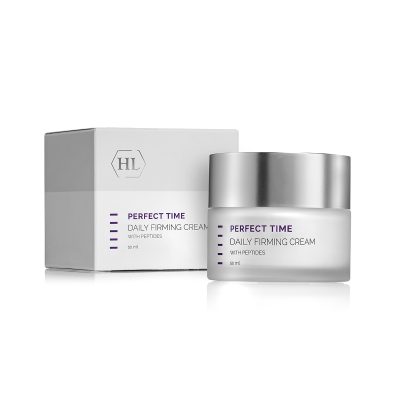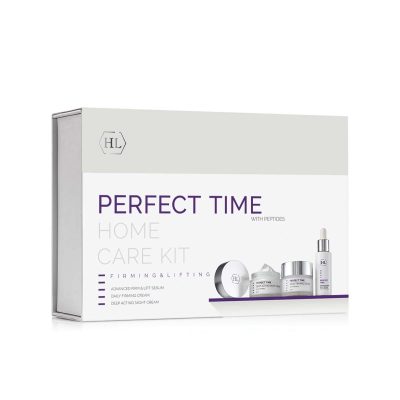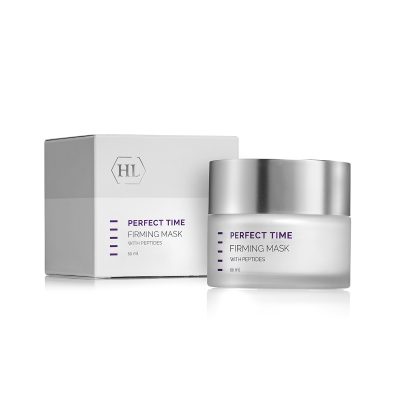Peptides in cosmetics
One of the important ingredients of current anti-aging products is peptides. These tiny molecules, which are an important component of all the cells in our bodies, have been at the center of recent clinical research in both medicine and aesthetics. Data accumulated from these studies indicate their ability to accelerate collagen production in the skin cells, reduce wrinkles and give the skin a younger look and texture.
What are peptides?
Peptides are short chains of interconnected amino acids (the building blocks of the proteins in our bodies) containing 3-50 amino acids in each chain. Peptides are classified into groups that include dozens of types, and they operate in a variety of mechanisms and locations in the body. Among other things, peptides act as mediators between the cells and the different skin layers, and transmit signals to the dermis tissue cells (including fibroblast cells, which are responsible for collagen and elastin production) – boosting their activity to a level similar to that of a younger skin. At the same time, peptides help the skin to create new small blood vessels, act as antioxidants on the skin surface, help regulate melanin production and inhibit inflammatory processes, while boosting the production of other important skin components.
Lipopeptides
At the heart of the research on the peptides are the lipopeptides – peptides to which a fatty lipid tail is connected. This binding between the fatty lipid tail and the peptides enables them to operate in unique and very efficient mechanisms. For example, it activates cellular immune responses as soon as the peptides penetrates the skin. Some lipopeptides, such as daptomycin, are used as powerful antibacterials and antifungals, and have been shown to cause them mechanical damage. Regarding skin effects, studies indicate that lipopeptides play a variety of essential roles and can be highly effective anti-aging components. Specifically, studies indicate that lipopeptides in cosmetic preparations are able to penetrate the cell membranes and signal skin cells to accelerate the natural production of collagen, elastin and hyaluronic acid. Thus, they actually act as firming agents – as they boost the skin to produce components which are naturally produced at a younger age, and whose production has almost completely ceased at an older age. As a result, they inhibit wrinkle formation, improve the appearance of existing wrinkles and fine lines, give the skin a younger look and texture, and help improve the skin’s structure and function.

-

Perfect Time Daily Firming Cream 50ml
75,77 € Add to cart -

PERFECT TIME FIRMING & LIFTING KIT (NEW)ADVANCED SERUM, DAILY FIRMING CREAM, DEEP ACTING NIGHT CREAM
198,58 € Read more -
Sale!

PERFECT TIME NECK & DECOLLETE CREAM 50ml
77,11 €Original price was: 77,11 €.57,83 €Current price is: 57,83 €. Add to cart -

PERFECT TIME FIRMING MASK 50ml
67,88 € Add to cart
Signal peptides
These peptides are mainly used as signaling molecules that mediate between the cells and the various skin layers. They signal the skin cells to start various healing processes. For example, following skin damage due to injury of inflammation – the peptides signal the skin cells to send immune cells to the damaged site in order to accelerate recovery and delay the inflammation process. They also signal the fibroblast cells – the connective tissue cells responsible for collagen production – to increase its production, and to mobilize the newly produced collagen to the damaged area.
- Hexapeptide 10 – helps to firm the skin and accelerate the production of keratinocyte and fibroblast cells, to rebuild the connection between dermis and epidermis, and to produce additional essential structures in the skin, such as laminin – molecules that are essential for the skin’s structure and attachment. The result: the skin looks supple, firmer and younger. In clinical studies, there was a significant improvement in the condition of wrinkles and fine lines 30 days after using the product(?), and a significant increase in skin elasticity, density and tension 60 days later.
- Serilesine – works in both fibroblasts and keratinocyte cells. It increases the production of important components in the connective area found in the dermoepidermal junction layer, which supports the epidermis and links it to the dermis. Those important components are collagen and elastin, laminin, fibronectin, epiligrin and proteoglycans.
- Acetyl Tetrapeptide 5 – this peptide is unique in that it has a particularly small molecular structure. As a result, it is especially suitable for use in the eye-contour area, and has been clinically proven to reduce wrinkle depth around the eyes, improve skin elasticity and moisturize. In addition, acetyl tetrapeptide 5 was found to protect collagen from glycolization. In this process of glycolization, a reaction is created between cellular glucose and collagen, resulting in collagen damage and leading to wrinkles and skin sagging. Clinical studies found visible improvement in 70% of subjects within 15 days, and in 95% of subjects after 45 days. The use of a preparation based on this peptide improves skin elasticity by 35% within 60 days, resulting in a marked improvement in appearance, elasticity and skin tone.
- Copper peptide – boosts collagen production in fibroblasts, and is therefore very effective in healing the skin and regenerating tissues.
- Palmitoyl pentapeptide – accelerates collagen production in fibroblast cells, thus reducing existing wrinkles and fine lines, and inhibiting the formation of new wrinkles.
- Matrixyl – stimulates both collagen and elastin synthesis in the dermis layer, thus helping to prevent wrinkle formation and helping to fill out existing ones. In a 2016 article published in Clinical, Cosmetic and Investigational Dermatology, the researchers reviewed past studies that examined the effectiveness of matrixyl in cosmetic products, and concluded that it was effective in stimulating skin regeneration through its ability to promote collagen synthesis.
Neurotransmitter Inhibiting Peptides
These peptides are used in innovative cosmetic products to reduce wrinkle depth. They work by inhibiting the release of the acetyl-choline neurotransmitter, which transmits electrical signals from the brain to the facial muscles. Over the years, the repeated contractions of the facial muscles and the constant pressure that causes the muscles to contract, induce cracking in the fibers and the structure of the skin.
- Argireline (acetyl hexapeptide 8) – inhibits the transmission of signals and relaxes the expression muscles, resulting in a marked improvement in the appearance of wrinkles and fine lines. For example, lab studies revealed that these neurotransmitter inhibiting peptides reduce expression lines by about 30%.
Carrier peptides
These peptides indeed serve as carriers, and are able to insert a variety of important cosmetic components into the skin cells, such as copper and magnesium that aid enzymatic processes and have been shown to improve pro-collagen production, skin elasticity and overall appearance.
Perfect Time
HL Lab Perfect Time series, designed for wrinkled adolescent skin, contains a combination of amino acids, lipopeptides and peptides produced by novel technologies, including Matrixyl, Serilesine, as well as the Lipormoist 2036 peptide and polysaccharide compound, which is produced by means of unique technologies.
Empirical studies indicate that this compound raises the level of type IV collagen – the major structural protein in the intercellular matrix – and increases the production of proteins in the epidermal cells (keratinocytes). For example, in a study on women between the ages 35-55 who used a preparation containing Lipormoist 2036 at a concentration of 5% for 28 days, the skin became supple, softer and firmer.
This unique combination improves skin structure, firmness and elasticity, increases the volume of subcutaneous fat, reduces wrinkles and increases the amounts of moisture in the skin. The results are noticeable in both the short and long term: along with an immediate stretching effect and smoothing, the skin becomes moist, firmer and supple.